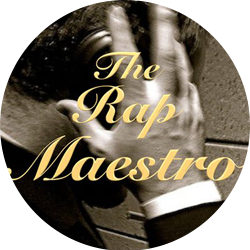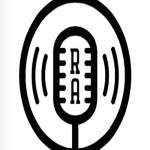The other day, I got an email from a reader named Vinny, asking for my thoughts on the perceived relationship between the 2 most recent Gorillaz albums:
>I’ve been thinking a lot about the 2 most recent Gorillaz albums, Humanz and The Now Now. The former is clearly more hip-hop heavy, and a lot of fans are claiming The Now Now is a return to a more classic Gorillaz sound. It seems like they were both made by Damon Albarn at the same time, and that he then just separated the hip-hop heavy and not-hip-hop heavy songs into these two albums. The albums did come out very close together (2017 & 2018), and the gap between these two & The Fall indicate shared production time. But I’ve heard others say that Damon took the reception to Humanz into account when making The Now Now, and that that was the reason for the decrease in the number of rap verses on the latter. Do you think there are any shared elements between the two albums that would lead you to believe they were made at the same time?
Whoa! A lot of great stuff to unpack in there. Obviously, by the end of this, we still won’t have any firm answer, but we’ll get a lot closer to understanding what’s going on here.
Overall, this is a classic good news, bad news situation that we’ve got on our hands. The good news is that this is a really simple question to answer. The bad news is that the only person who can answer it, Damon Albarn, is super famous (and so super inaccessible,) which means that that specific question is likely to remain unanswered. Additionally, I’m not entirely sure how much a definite answer to this question would add to our understanding of these two albums. Sure, it would tell us a little bit more about Albarn’s influences, and possibly about how he responds to public feedback, but both of those threads are, overall, somewhat immaterial to these two albums’ themes and topics, neither of which are particularly self-conscious or self-referential. Now, if either of these albums was specifically about public success or an idol’s career—say, like Jay-Z’s first “final” album, Kingdom Come—then those would, indeed, be essential questions.
***(I’ll try to address his original, untransformed question briefly though. The thing about popular music—which includes everything but classical music and jazz—is that it’s not really defined by musical structures, because almost everything is in a major key, is in 4/4, is diatonic, and has a back beat to it. It’s not important if someone knows what any of that means; it just means that most pop culture is broadly similar in terms of structure, which is originally what this reader had asked me to use to disentangle the albums from each other.)
This isn’t to say I’m throwing away the question entirely; what I’m doing is reworking it into something that’s hopefully a.) more answerable, and b.) more revealing. So, I’m not going to ask, “Are there any shared elements between Humanz & The Now Now that would lead a person to believe they were made at the same time?” Instead, I’m going to ask: “How do the musical elements that Humanz and The Now Now share with each other (or do not share) compare with Damon Albarn’s typical handling of rap music throughout the rest of Gorillaz’ discography, going back to 2001’s Gorillaz?”
To be sure, the basic premise on which the original question rests is borne out by even the quickest listen to these albums. Yes, The Now Now sounds very different, and this is because there’s much less rap on it. For rappers, Humanz features Vince Staples, De La Soul, Danny Brown, Pusha T, DRAM, Popcaan, and Zebra Katz. For The Now Now, it’s really just Snoop Dogg on its third track. (We’re going to leave hip hop out of this for a second, and just focus on rap, since it’s so much easier to spot a rap than it is to spot hip hop.)
And, as was pointed out, this is actually not a deviation away from Humanz, but a return to form. As amazing as their debut album Gorillaz was—and as ubiquitous as its single “Clint Eastwood” came to be, with its killer Del the Funky Homosapien verse—many people forget that it likewise had a dearth of rap features. There were really just two Del verses, with the second coming on “Rock The House.”
On their sophomore effort, Albarn increased the number of rappers. He now featured De La Soul, MF DOOM, Roots Manuva, and Neneh. Again, the hit single had rap on it: De La Soul’s own one, from Trugoy, on “Feel Good Inc.” On Plastic Beach, from 2010, this dynamic was maintained, with features from rappers Mos Def, Snoop Dogg, and Kano. Again, the two hit singles had rappers on them: “Stylo” (with Mos Def) and “Superfast Jellyfish” (with De La Soul.) This means that, over the first 3 albums (and first decade of existence,) Albarn has deployed rappers in a consistent manner. He’s had them feature on about a third of his songs, and he’s always put them on his albums’ main hit singles. To be sure, Humanz represents the most extreme form of this dynamic. I’ve already listed there rappers on there, but—just to really nail this down—rappers do indeed feature on the song’s first two singles (Popcaan on “Saturnz Barz,” and DRAM on “We Got The Power.”)
I’ve worked so hard to describe and define this dynamic because I think it explains a whole lot of the difference between Humanz and The Now Now. Damon Albarn uses rap to signal something in his music. Obviously, the rappers’ verses are amazing achievements in their own right—Del’s last verse on “Clint Eastwood” will get stuck in anyone’s head after the very first listen.
But Albarn also uses rap as a symbol that stands for something beyond whatever the lyrics themselves have to say. So much of Albarn’s work is about the relationship between the artificial—the “plastic”— and the natural—the “beach.” It’s about the struggle between the evil in humans—the “demon”— and the good in them—the “days.” Even apart from Plastic Beach and Demon Days, a perusal of some of the other Gorillaz album names will demonstrate this, such as the artificially stylized Humanz, or The Fall (an obvious reference to Adam & Eve.) This computer-versus-human war also comes out in his contrast of largely acoustic songs (“Punk,” with singer, real guitar, real drums and all) with highly synthesized songs (the subsequent song, “Soundcheck,” with its distortion and synthesizers.)
Rap, in this dynamic, stands for the human, for the natural: rap represents humans taking the microphone back from the robots and literally giving themselves a voice. Most of the time, this parable of mankind is in the background of a Gorillaz song. Sometimes though, it is glaringly obvious, as on songs like “Fire Coming Out Of The Monkey’s Head.” In this parable, rappers would be on the side of the Happyfolk, since they (rappers) can be neither replaced nor erased. Their message is simply too powerful and too primal, which makes it eternally lasting.
That is the reason why no rappers show up on The Now Now: not because of public blowback, or because of genre compartmentalization, but because Damon Albarn is not interested in exploring the particular lyrical themes on The Now Now that his featured rappers usually develop for him (remember: Albarn had a decade-long career before he ever stepped foot in a studio with a rapper.) This newest album is basically the sounds of Gorillaz (the 2001 debut album,) cut loose from the unifying thematic context of the natural-versus-artificial struggle. This is the very first Gorillaz album that pretty much does away with that specific, thematically-unifying context.
Even Albarn himself has attested to this, in a 2018 interview with Spin. Since Albarn says it better than I ever could, I’ll let him have the last word on how he views the relationship between rapping and singing in The Gorillaz’ music:
“I thought I should make a record where I’m just singing for once…It’s pretty much just me singing.”
https://www.spin.com/2018/05/gorillaz-humility-and-lake-zurich/


 Join the weekly RapAnalysis newsletter at
Join the weekly RapAnalysis newsletter at